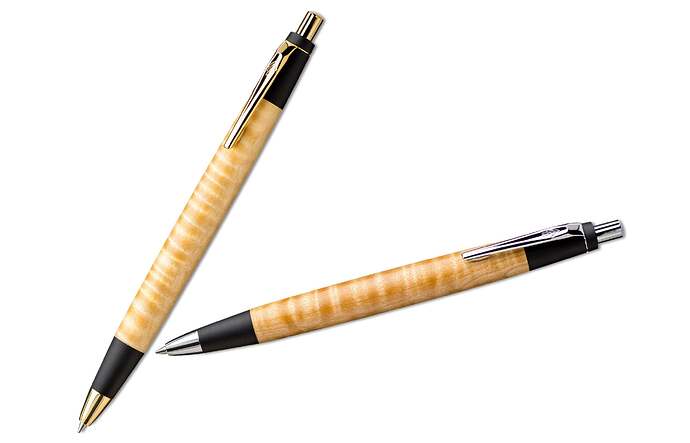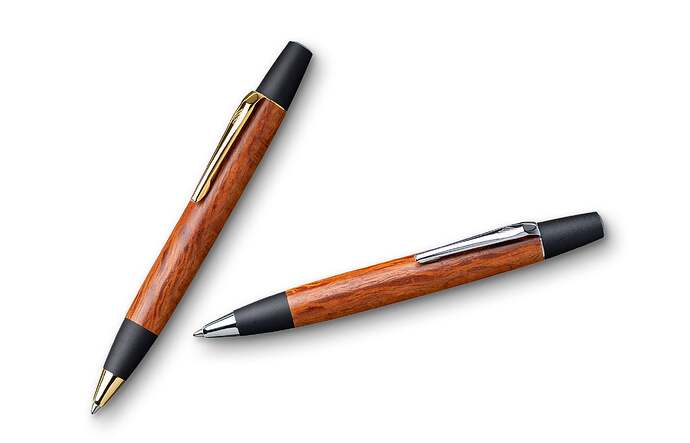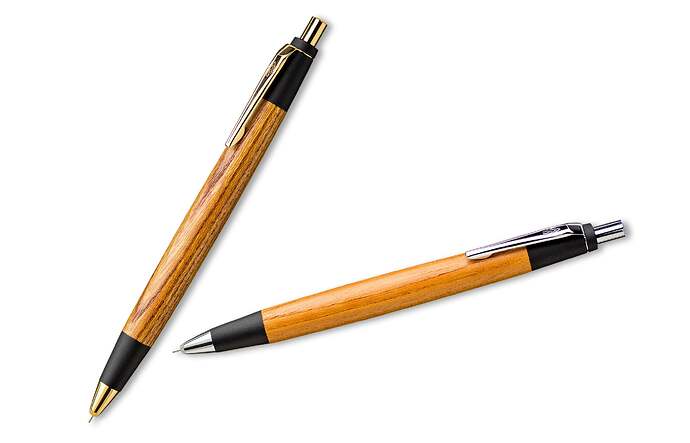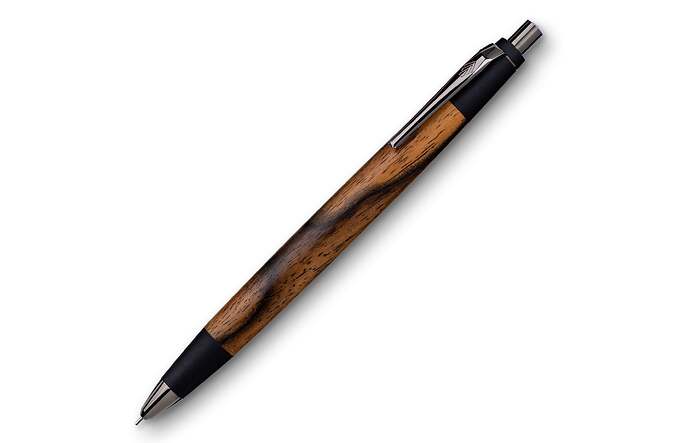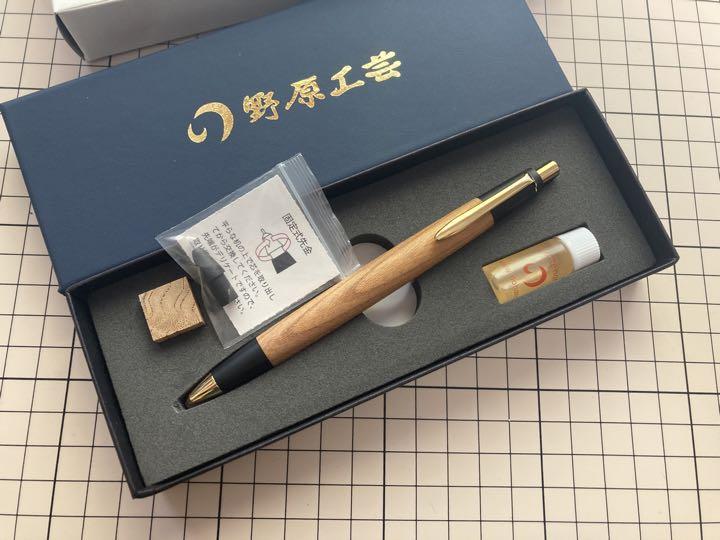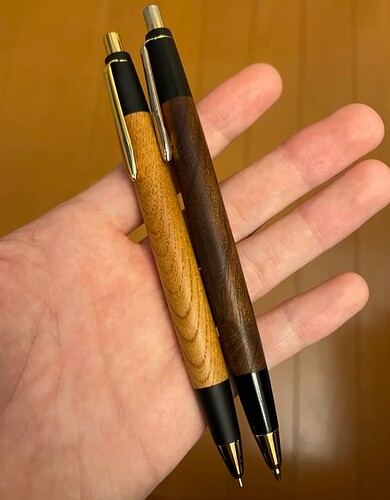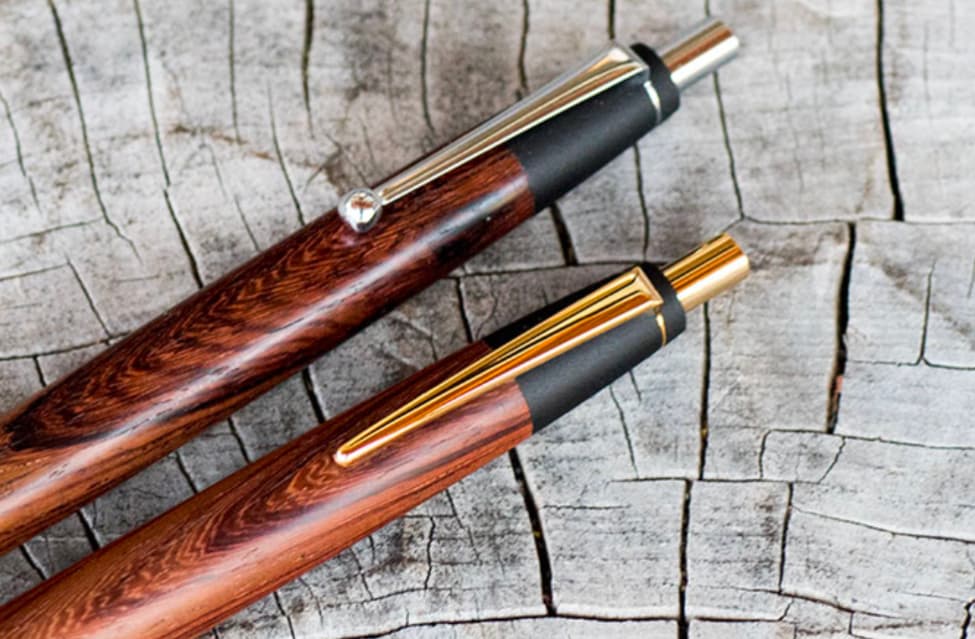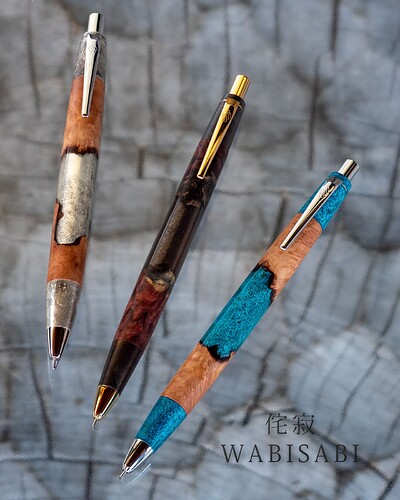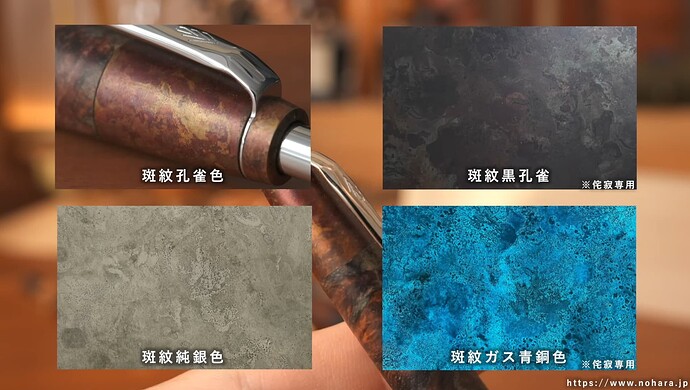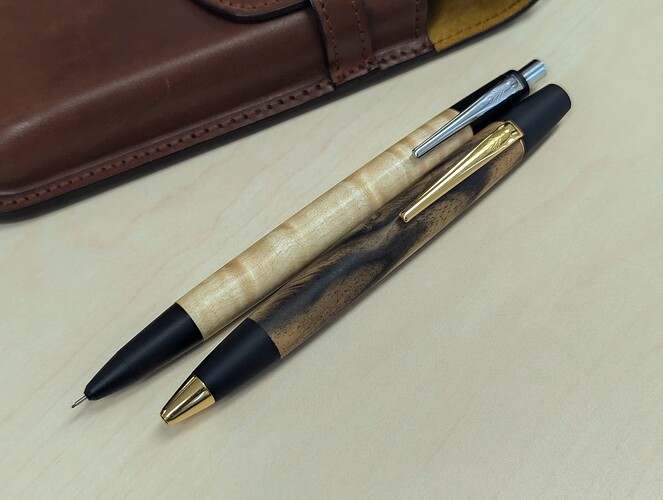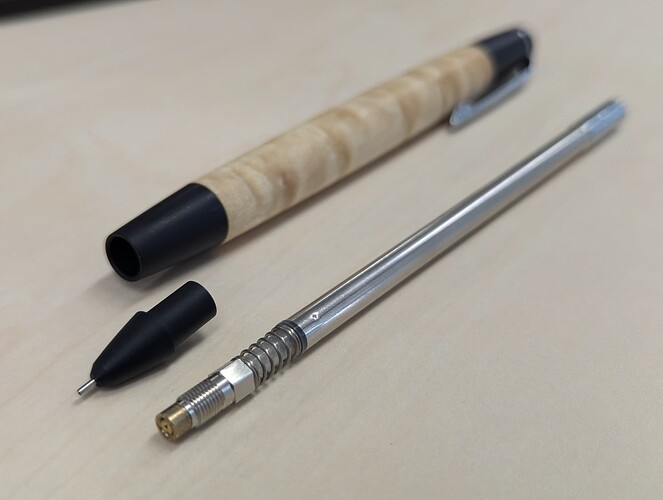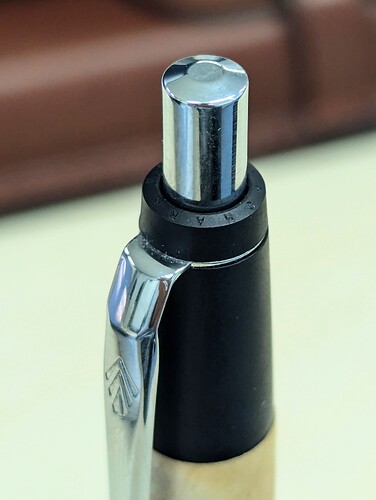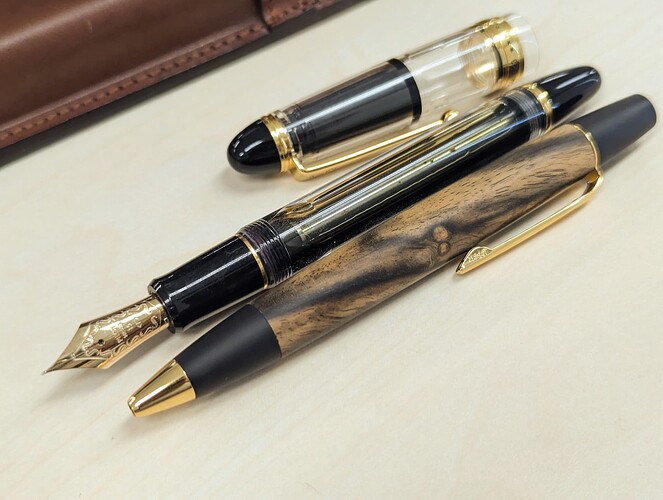Hi everyone! I have some time today to write, so I’ll continue the series with the most famous workshop in Japan—Nohara Kougei. Anyone who has ever browsed Mercari has probably seen these pencils reach ridiculous prices and wondered what are they and why are they so hyped. Hopefully I can clarify a bit about Nohara in this post.
About the maker
The workshop was founded in 1923 by Nohara Sanzo, and has passed through several generations of the Nohara family. Following the tradition of Nagiso lathe, they made wooden turned items like tea caddies and wooden bowls. They also made some traditional fabrics like Nagiso neko.
One of the tea caddies that are still sold by them.
The names of the artisans are as follows:
Nohara Sanzō (野原三造) - Founder.
Nohara Tamotsu (野原保) - Born 1922. Designated national artisan.
Nohara Hirohira? (野原廣平) - Born 1950. Designated national artisan. Led the design of the pens and pencils.
Nohara Kazuhiro (野原一浩) - Born 1980. Current artisan in charge.
The information about when they started making pens is quite scarce, although we know that in 1998 Hirohira started making pens and mechanical pencils with OEM kits, although they weren’t happy with the quality. In 2002 they collaborated with a Japanese manufacturer to create their own metal parts.
Website - https://nohara.jp/
Instagram - https://www.instagram.com/noharakogei
Twitter - https://x.com/noharakogei
Models
Here I’ll only mention their current lineup.
Ballpoint - Standard size
Ballpoint - Slim size
Ballpoint - Rotary
Mechanical pencil
Mechanical pencil - Neoblack
In short, for mechanical pencils, trim can be chosen in silver, gold or black. The tip is of sliding sleeve type, with a fixed sleeve black tip also included in the purchase.
This is the box it comes with. For the less expensive models, a cardboard box is used. For the more expensive models, a pawlonia wooden box is used. Notice the small bag with the fixed sleeve tip.
Many different woods are used. Nohara has a list of “standard” or regularly stocked woods, as well as some limited editions. The list of woods can be checked on their website.
Old models
There have been several gradual changes. In the internet there’s no clear naming of the generations, so I’ll number them myself for clarity.
Gen 1 (1998-2002): Pencils built with foreign OEM metal parts. I have seen no photos of them.
Gen 2 (2002-2009): Pencils built with the parts jointly developed with the Japanese company.
Gen 3 (2009-2020): Although the shape didn’t change much from gen 2, we believe that the manufacturer changed.
Gen 4 (2020-2022): The tip changed from a conical sliding sleeve to a drafting sliding sleeve. There are some other minor changes in mechanism and weight.
Gen 5 (2022-present): The clip changed from the rounded shape OEM clip to a completely original shape. Check my Craft A post for more info about that clip.
This is Gen 4 on the left and Gen 3 on the right. Photo source: Seasar
Other two clips have been available. To my understanding, these were only sold for ballpoints, not pencils. They’re called the “ball clip” and “N clip”. Source: Blog post
This is the new (gen 5) clip. You can see the brand logo stamped on it. The way the clip curves inside also changed, from a simple 2 fold to a better 3 fold. Source: Blog post
Wabi sabi & Hanmon metal parts
To celebrate the 100 years of the workshop, they released a series of limited edition pens called “wabi sabi”. The metal parts on these are made by another Japanese workshop called Momentum Factory Orii. Later on, they’ve made some store-limited models with these metal parts, but outside of the wabisabi line, so without the colored resin in the middle.
Blue is only available in the wabisabi line, the other three colors have also been released in other store-limited editions.
Rarity
In part due to the long story of Nohara, in part due to the big influence of the youtuber “Seasar”, these pencils are incredibly hyped and hard to get. The website is almost always out of stock, and when some items are listed, they’re sold within seconds. Now they’re selling them on a raffle basis—this means that only some selected participants get a chance at buying them.
For the physical store, it’s only by reservation and only 3 groups of people can enter each day. Reservations are done via mail and also via a raffle system. Even when going to the store, there’s a limit to the number of pens you can buy (e.g. only one pencil per person).
Because of this, the resale value of Nohara pens is ridiculous. They often sell for 3 to 5 times the sticker price, depending on the model. Some very rare limited models have reached more than 100000 JPY on Mercari.
Personal opinion
I said the same with the Dive when it released. It’s an amazing 35 dollar pen, if you pay 300 dollars for it be mindful that you’re paying a huge markup, and you won’t get your money’s worth. Nohara pencils are cool at their MSRP, but the prices they fetch in Mercari are crazy.
I was very lucky to know a person who managed to go to the physical store and he bough a pencil for me (I haven’t met him yet so I still didn’t try it). He told me that the experience of going to the store, seeing them in person and enjoying the nature around Nagiso is great. If you live in Japan and have the chance to go there, I think it’s amazing. But if your only option is Mercari, I’d encourage you not to pay into the hype and instead buy something from Craft A or Setsu, which are equally original, high quality and less overhyped.
It was a long article but I think it was well deserved! Remember to leave a ![]() if you enjoyed reading it.
if you enjoyed reading it.
Other posts:
[Artisan] Craft A (クラフトエー)
[Artisan] Koubou Setsu (工房楔)


